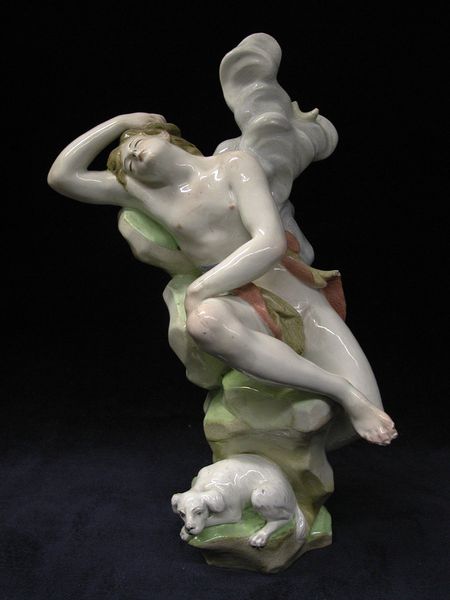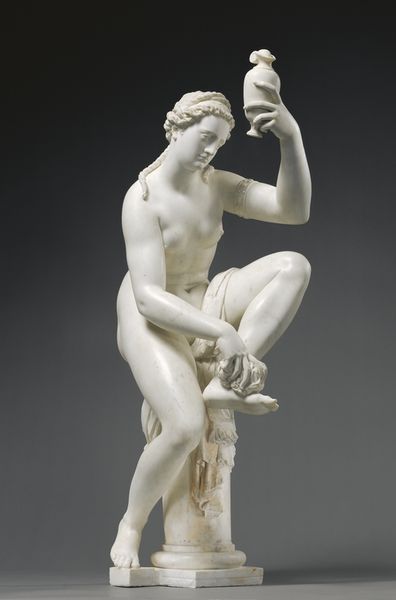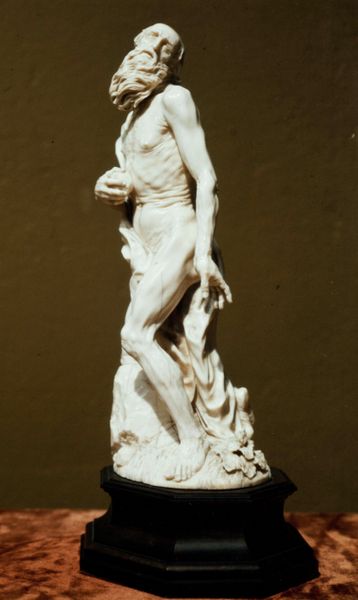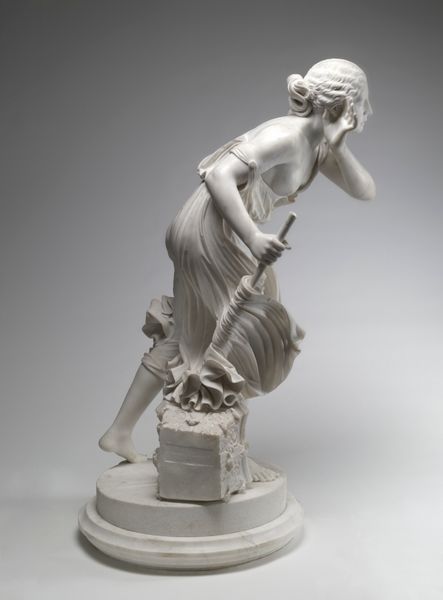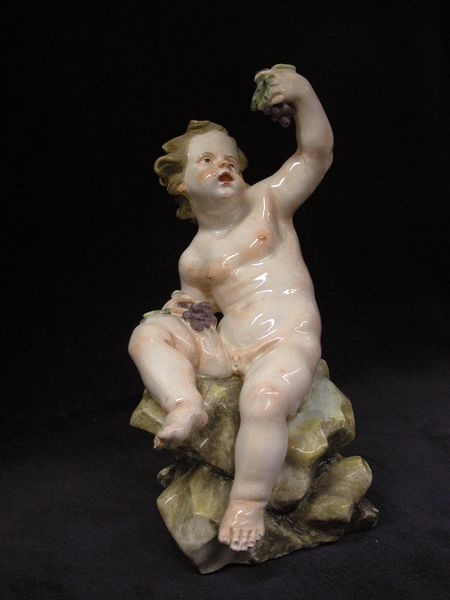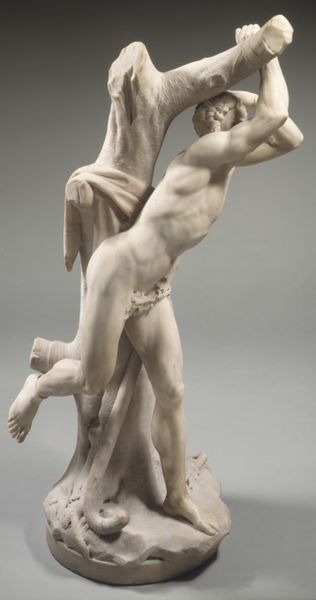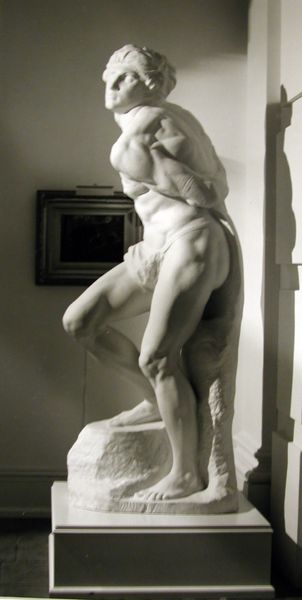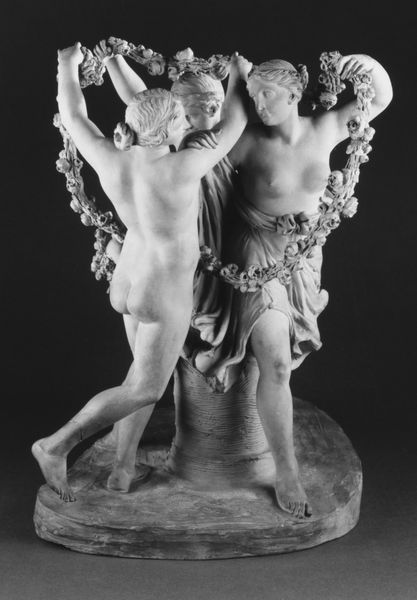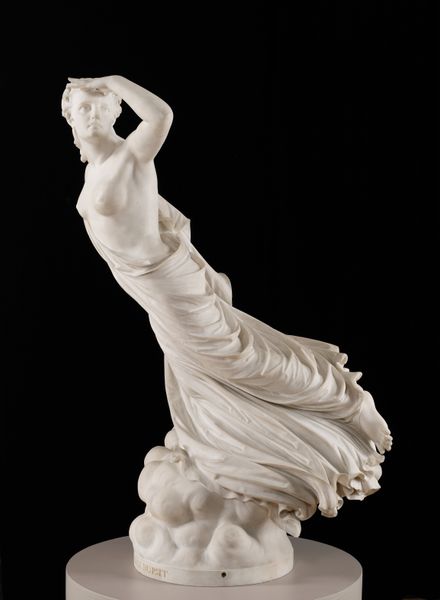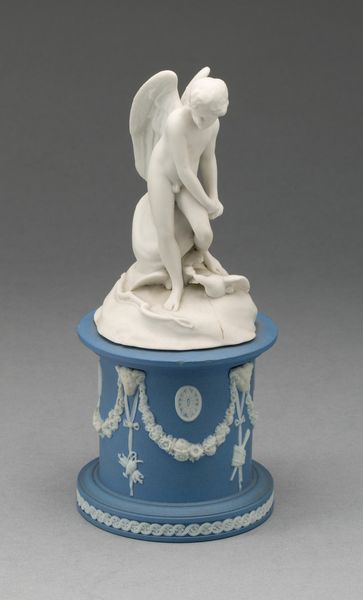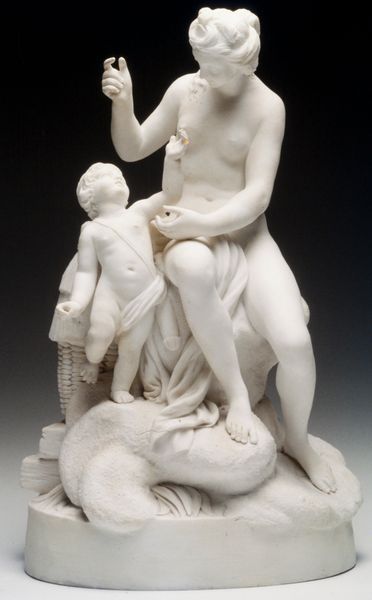
Copyright: Public domain
Editor: This is "L'amour à la folie," or "Love and Madness," a marble sculpture by Jean-Baptiste Carpeaux, created in 1873. It depicts a cherubic figure gleefully brandishing another smaller figure. There's a disturbing, almost manic energy about it that I find unsettling. What strikes you when you look at it? Curator: The manic energy you've identified is key. I'd say Carpeaux uses the allegorical figures of Love, embodied by the larger putto, and Madness to critique societal expectations around love and control. Look at how Love dominates, literally lifting and displaying Madness. Editor: So, it’s not a celebration of love, but a commentary on power dynamics *within* love? Curator: Exactly! Consider the historical context: mid-19th century France. What do you know about marriage or social structures back then? Editor: Well, marriage was very much about property and social standing, especially for the upper classes. Women had limited agency. Curator: Precisely. Carpeaux, through this sculpture, seems to question the notion of love as a force that can overwhelm and even control. Notice how the figure of madness appears almost powerless, its limbs flailing. Is it joyous, or trapped? What statement might Carpeaux be making? Editor: I see. Maybe he's challenging the idea of "amour fou" – romantic madness – as something desirable. The sculpture becomes a critique of the way society can romanticize oppressive relationships. Curator: I think you've hit on something vital. It highlights how power, especially within romantic relationships, can manifest as a form of "madness," both for the controller and the controlled. Food for thought. Editor: It certainly shifts my perspective. I initially saw just a playful sculpture, but now it's clear that it carries a far more profound, even critical message about love, power, and control in 19th-century society. Thank you!
Comments
No comments
Be the first to comment and join the conversation on the ultimate creative platform.
